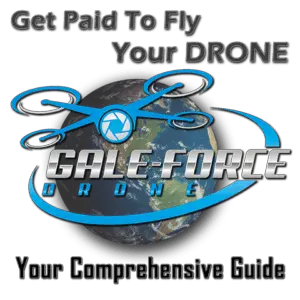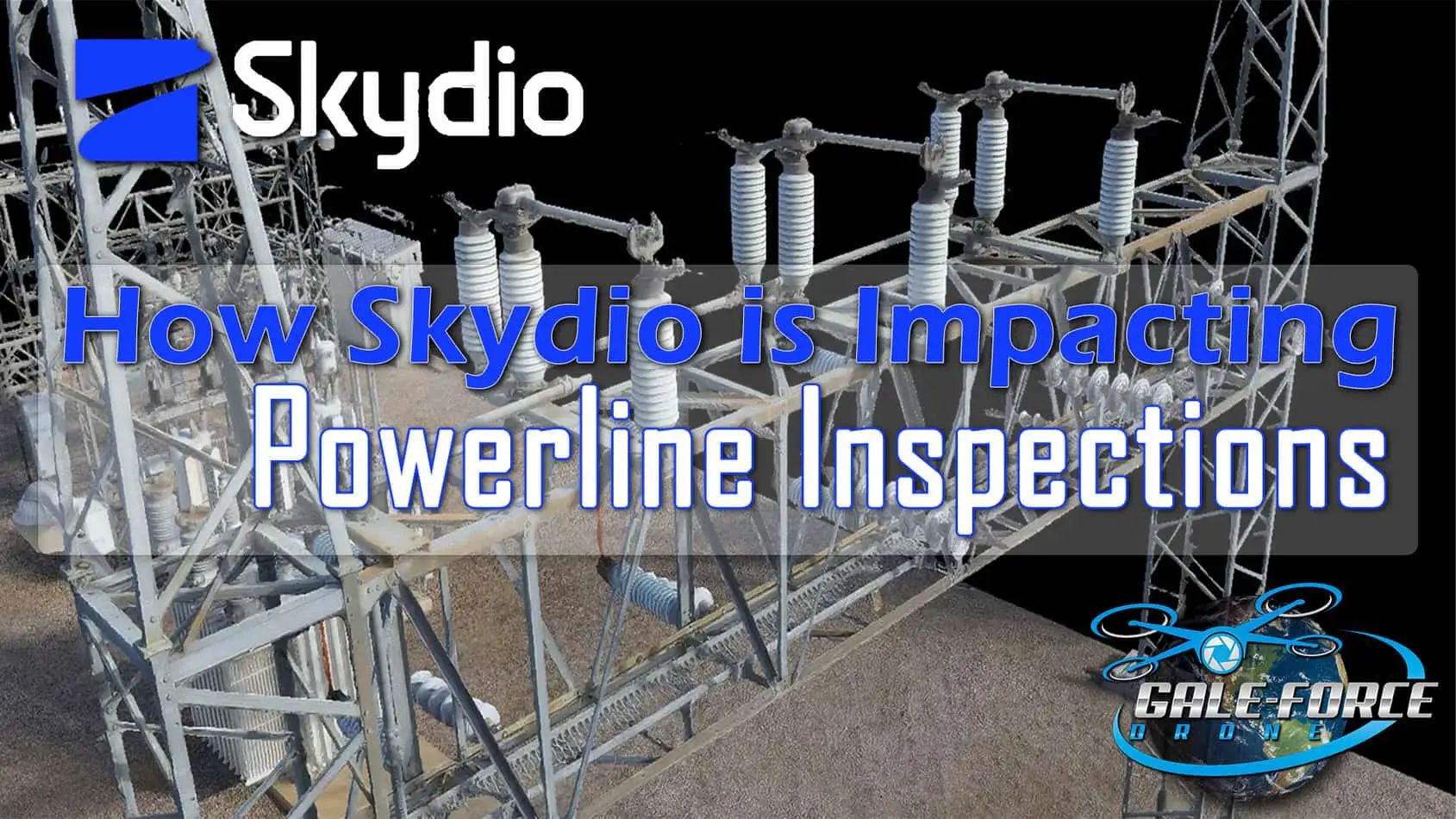
As an aspiring drone professional, you’re undoubtedly aware of the growing demand for drone services and the exciting career prospects they offer. I have been watching the trends and I wanted to draw your attention to the revolutionary approach that Skydio is taking for distribution and transmission powerline inspection.
So, for this guide, I want to get into Skydio’s potential impact on Aerial Powerline Inspections, examining how they harness their distinctive 3D scanning technology and autonomous flight capabilities. We’ll talk about how their transformative approach is capturing the industry’s attention and how their approach differs from standard powerline inspection methodologies across the industry.

Now I don’t want to confuse you, but for powerline inspection methods, the standard approach involves flying the drone to each individual asset, capturing visual (RGB) and thermal inspection images. These images are then carefully analyzed to identify any issues, defects, damage, or changes in condition. This method remains the tried and true way of conducting powerline inspections to this day.
However, with the advent of advanced technology, such as Skydio’s 3D scanning capabilities, a new and exciting alternative is emerging. Instead of relying solely on individual inspection images alone, 3D models of the assets are now being utilized for in-depth analysis. This transformative approach has its own set of pros and cons.
On one hand, the standard inspection method provides a detailed visual representation of each asset, allowing for precise examination of specific areas of concern. It has a proven track record and is familiar to industry professionals. On the other hand, powerline inspection using Skydio 3D models, provides a comprehensive view of the entire asset, enabling a more holistic analysis. It allows for a deeper understanding of the asset’s structural integrity, potential vulnerabilities, and overall condition.
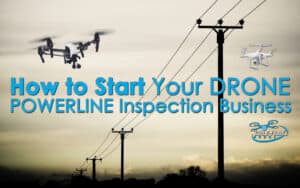 Click into my article “Aerial Powerline & Tower Inspection” to learn about how standard drone powerline inspections are conducted.
Click into my article “Aerial Powerline & Tower Inspection” to learn about how standard drone powerline inspections are conducted.
As aspiring drone operators, it’s important to keep up with new technologies in our industry and consider the implications these changes have on the powerline inspection services. By familiarizing ourselves with new emerging approaches, we can make informed decisions and adapt to the changing landscape of powerline inspections.
Skydio‘s innovative approach to powerline inspection sets them apart from the rest of the industry. Their drones are equipped with advanced AI and computer vision software, enabling remarkable flight navigation and obstacle avoidance capabilities.
Advanced Flight Navigation and Obstacle Avoidance
Using six integrated fisheye, 4K navigation cameras, Skydio drones can reconstruct a complete 360-degree view of their surroundings in real time. This comprehensive awareness of the environment allows them to navigate with precision and efficiency, even in challenging conditions.
Context-Aware AI Algorithms
What truly distinguishes Skydio is their context-aware AI algorithms. These algorithms enable the drones to autonomously analyze what they see and make informed decisions. For example, they can identify cables floating in mid-air and deduce their likely extension in both directions, allowing the drones to safely maneuver around obstacles that may be missed by human operators. This level of autonomy is critical when operating in complex and obstacle-rich environments.
As drone professionals, understanding and appreciating the capabilities of advanced drones like Skydio’s opens up new possibilities for powerline inspection. By staying at the forefront of the industry, we can contribute to the exciting developments in aerial inspections and make the most of these cutting-edge technologies.
Skydio’s revolutionary feature, Skydio 3D Scan, takes powerline inspection to new heights by introducing autonomous data capture capabilities. This groundbreaking technology utilizes the Skydio Autonomy flight engine, enabling drones to execute fully autonomous flight patterns and capture precise data.
Accessible to All Drone Operators
What’s remarkable about Skydio 3D Scan is its accessibility to professional drone operators of all skill levels. Regardless of your experience, you can leverage this powerful tool for higher quality area mappings and physical asset inspections. It opens up possibilities for in-depth analysis and comprehensive assessments that were previously limited by traditional methods.
Streamlined Process for Powerline Inspections
Using Skydio 3D Scan for powerline inspections is a straightforward process. You define an operating volume, encompassing the area of interest, and set parameters such as the desired ground sample distance. From there, the drone takes charge, autonomously capturing complete and accurate photosets of the powerline assets. It operates seamlessly without requiring additional input from the human operator.
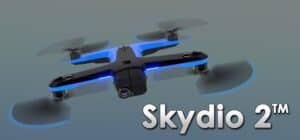 By embracing Skydio’s autonomous data capture capabilities, we can elevate our powerline inspections to new levels of efficiency and accuracy. This empowers us to provide comprehensive assessments and valuable insights that contribute to the overall safety and reliability of powerline infrastructure.
By embracing Skydio’s autonomous data capture capabilities, we can elevate our powerline inspections to new levels of efficiency and accuracy. This empowers us to provide comprehensive assessments and valuable insights that contribute to the overall safety and reliability of powerline infrastructure.
Skydio 3D Scan revolutionizes powerline inspection by automating data capture with comprehensive coverage and ultra-high resolution. With its adaptive scanning software and intelligent flight planning, Skydio drones create live 3D models of the environment, autonomously capturing all surfaces using specified settings.
Workflow Steps
- Enable 3D Scan operating mode, ensuring drone and controller pairing.
- Install required equipment and software.
- Choose from capture modes: 2D, 3D, or multi-battery scans.
- Access scan data by retrieving the media card and using a card reader.
- Images are stored in JPEG format, organized by scan name and timestamp.
- Click HERE for the Skydio 3D Scan Datasheet.
Data Processing Options
Skydio’s innovative approach extends beyond data capture to processing. They offer two options:
- Process the entire workflow with Skydio’s advanced cloud-based processing capabilities for an end-to-end experience.
- Use other 3rd-party providers to process the data, allowing flexibility in workflow.
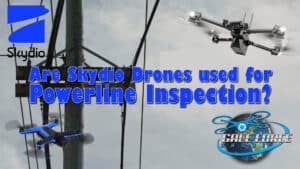 Click in to my article “Can Skydio Drones be used for Powerline Inspections” to see how Skydio can also be used to conduct conventional powerline inspections.
Click in to my article “Can Skydio Drones be used for Powerline Inspections” to see how Skydio can also be used to conduct conventional powerline inspections.
Best practices include maintaining software updates, avoiding prolonged exposure to direct sunlight, and being cautious in extreme temperatures. GPS is required for scans above 65 ft (20 m), and exiting the 3D Scan operating mode restores access to Flight Skills.
Skydio’s transformative approach empowers drone operators to perform high-quality powerline inspections, leveraging the advanced capabilities of 3D scanning technology.
As an aspiring drone pilot, the adoption of Skydio’s 3D scanning approach in powerline inspection opens up a world of benefits and opportunities.
Increased Efficiency and Enhanced Safety
Skydio’s 3D scanning approach brings increased efficiency to the inspection process, allowing for comprehensive data capture and analysis in a fraction of the time. The autonomous flight capabilities of Skydio drones reduce the risks associated with manual piloting, enhancing safety during powerline inspections.
Improved Data Collection and Analysis
The advanced 3D scanning capabilities provided by Skydio enable more accurate and detailed data collection. This translates into better insights into the condition of powerline assets, leading to more informed decision-making and improved maintenance strategies.
Career Opportunities in Drone Services
The demand for drone services is growing across various industries, and powerline inspection is just one of the many sectors that rely on the expertise of drone pilots. This presents an exciting opportunity for aspiring drone pilots to carve out a fulfilling career path. To enter the industry, it’s important to obtain necessary certifications, such as the FAA Part 107 for commercial operations. Continuous learning is key, as staying updated with the latest advancements in drone technology and regulations will set you apart. Networking with industry professionals and participating in relevant events or communities can also help build valuable connections.
So, seize the opportunity and embrace the potential of Skydio’s 3D scanning approach and embark on a journey that combines your passion for drones with a promising career in powerline inspection and beyond.

It’s my personal opinion that Skydio is making a real impact on aerial powerline inspections with their unique capabilities. The use of 3D scanning, advanced AI, and autonomous flight in their drones offers distinct advantages, including increased efficiency, enhanced safety, and improved data collection. By creating comprehensive 3D models of assets, Skydio is pushing the boundaries of standard inspection methods and opening up new possibilities for analysis and decision-making. I encourage all aspiring drone professionals to take advantage of the opportunity to be part of this emerging technology! Get your Part 107, stay informed by networking with industry professionals.
